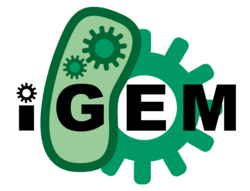Team:METU/KillSwitchOverview
From 2012.igem.org
Overview
Kill switch is a safety system which is necessary to control the release of genetically modified organisms (GMOs) into the environment. Since we aimed to construct a biofilm with GMOs which will convert CO to CO2, we needed a kill switch that can prevent our system to cause any harm to the environment. In order to achieve that aim we used the kill switch designed by Berkeley 2008 iGEM Team (Bba_K112808) and also we tried to develop it.
How The System Works ?
In order to construct our kill switch system we needed a reagent that E.Coli will grow and in the absence of that reagent all the bacteria should die. For that purpose we prefered to use IPTG (Isopropyl-beta-D-thiogalactopyranoside) because it cannot be metabolised by E.Coli and that’s why its concentration remains constant in the cell. When IPTG is present in the cell it will bind to LacI which can be produced by the promoter J23116. Basal LacI expression is already present in E.Coli but at low levels and it is hard to control the system with that much LacI. Hence, we prefered to produce it with the help of J23116. Our kill switch system includes the expression of endolysin, holin, antiholin and their production is controlled with the initial concentration of IPTG in the environment. Actually cell lysis can occur without IPTG but the lysis rate will be high. By using IPTG we aimed to keep our system under control. *Endolysin-Holin System; Endolysin and holin are the proteins needed for the cell lysis. Endolysin is a lysozyme and its funtion is to hydrolyze the peptidoglycan bacterial cell wall but it needs holin to form pores on inner membrane, then it can reach periplasm and cell lysis occur.
The fate of the Gram-negative envelope during holin–endolysin lysis.
Pre-Hole Configuration Hole Configuration

In this figure holins are shown as clear ovals and endolysin is shown as notched circles.
- Accumulation of holin is present in the inner membrane, while endolysin accumulates in the cytosol. Holin action can be prevented with the inhibitors (shown with star and black ovals).
- When the holes are formed by holin in the inner membrane, endolysin can attack the murein which is important for cell lysis to occur.
* Antiholin; It is the protein that blocks the function of holin and it is important for the regulation of cell lysis.
In our system antiholin is constitutively produced by the promoter J23116 and when antiholin level is in between 1000-3000 molecules, the cell will die. Actually,it is the number of free holin molecules that determines if the cell will die or not.
Modelling
Results
Biobricks
 "
"

